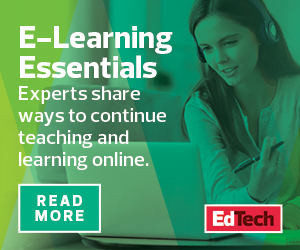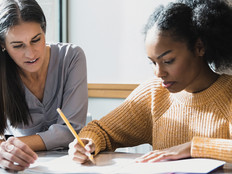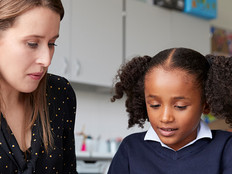How the Pandemic Pushed Video Instruction Forward
This pandemic now has the education world moving forward at a breakneck pace, building the education technology bike as we ride it. More than 1 billion students globally — along with their parents, teachers and administrators — have been forced into a completely online world.
This has created immense challenges for the education system that don’t have easy answers: Not all students have online devices. High-speed internet access isn’t yet available in all homes. And parents of children with disabilities face even greater challenges in providing their kids with the education resources they need.
But for all the roadblocks and failures our education system is experiencing from being whiplashed into an online world, an undeniable success story is occurring alongside it. Teachers and administrators are embracing change and finding ingenious ways to connect with students online in a meaningful way. Hundreds of thousands of teachers have realized over the past two months how much easier it has become to create, upload and share videos online. They’ve been forced into video instruction by the pandemic, but many are finding the medium to their liking. They may never go back, and education will improve as a result.
READ MORE: How are educators keeping students engaged remotely?
Teachers May Be the Next YouTube Stars
In Washington, D.C., high school chemistry teacher Jonte Lee is recording experiments from his kitchen, using his refrigerator as a whiteboard. With a smartphone and his new Instagram account, he’s able to ask and answer students’ questions in real time.
“Life has changed,” Lee tells WJLA. “But the love I have for my students has not changed.”
There are countless other examples of teachers going above and beyond right now to stay connected with their students. And it’s not just the tech-savvy teachers who are successfully implementing these online solutions. Lee admits he’s only just started using Instagram since the pandemic began.
“I do not know how to use social media at all,” he says.
🧬 🧪 @dccoolidgeshs Chemistry Teacher, @JontrLee turns his kitchen into a chemsity class to support @dcpublicschools Home Learning for students. #HomeLearning # DCPS #NoCoolingAtCoolidge @DCPSDrBey @NAFCareerAcads pic.twitter.com/dghAO44Jtm
— CoolidgeMassMedia (@CoolidgeMedia) April 3, 2020
Recording classroom lessons isn’t a new concept; it’s been possible for decades, and easily accessible since the advent of YouTube. But now, the marketplace of teachers providing their instruction online has grown exponentially, bringing the flipped classroom concept to school districts across the country.
Some of these teachers are for the first time becoming known beyond their classrooms, gaining significant viewership online and generating what no doubt will be a regular audience. These teachers were already beloved by their students as fantastic and engaging educators. Now, they have an opportunity to use a wider platform to inspire learning outside their school districts. So much for slow and deliberate change.
Teachers desperately want to be back in their classrooms with their students, but some of them are embracing the online format too. Maybe America’s next YouTube star could be a teacher after all. What a welcome change that would be.










